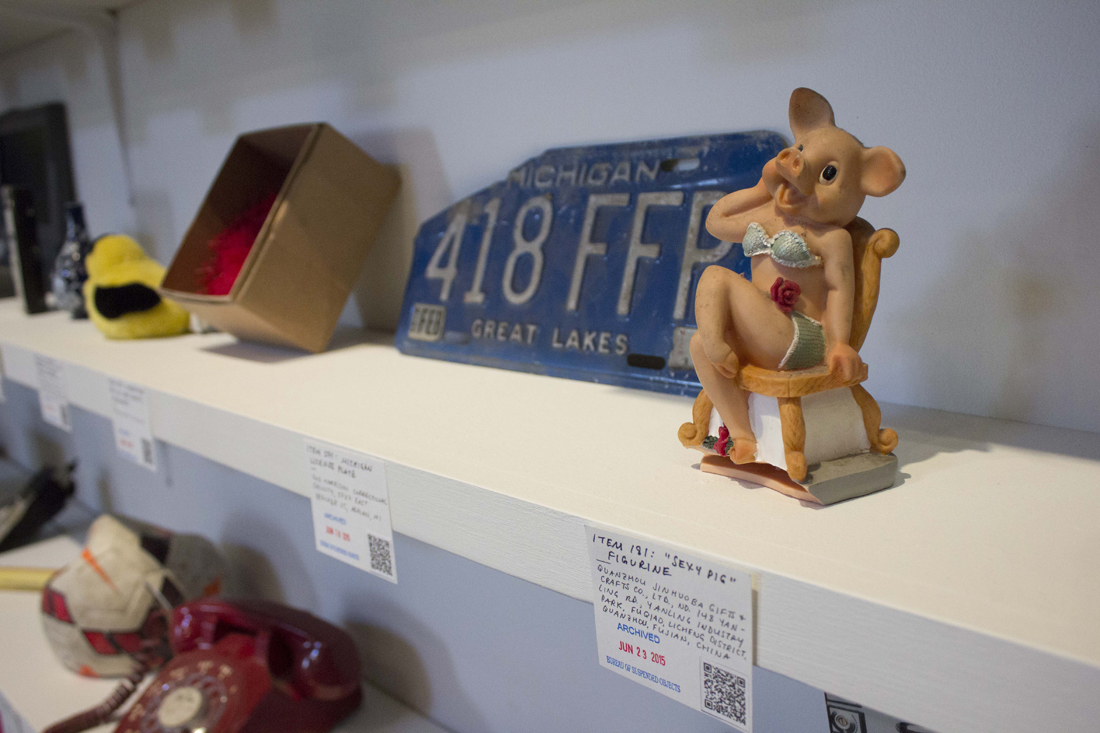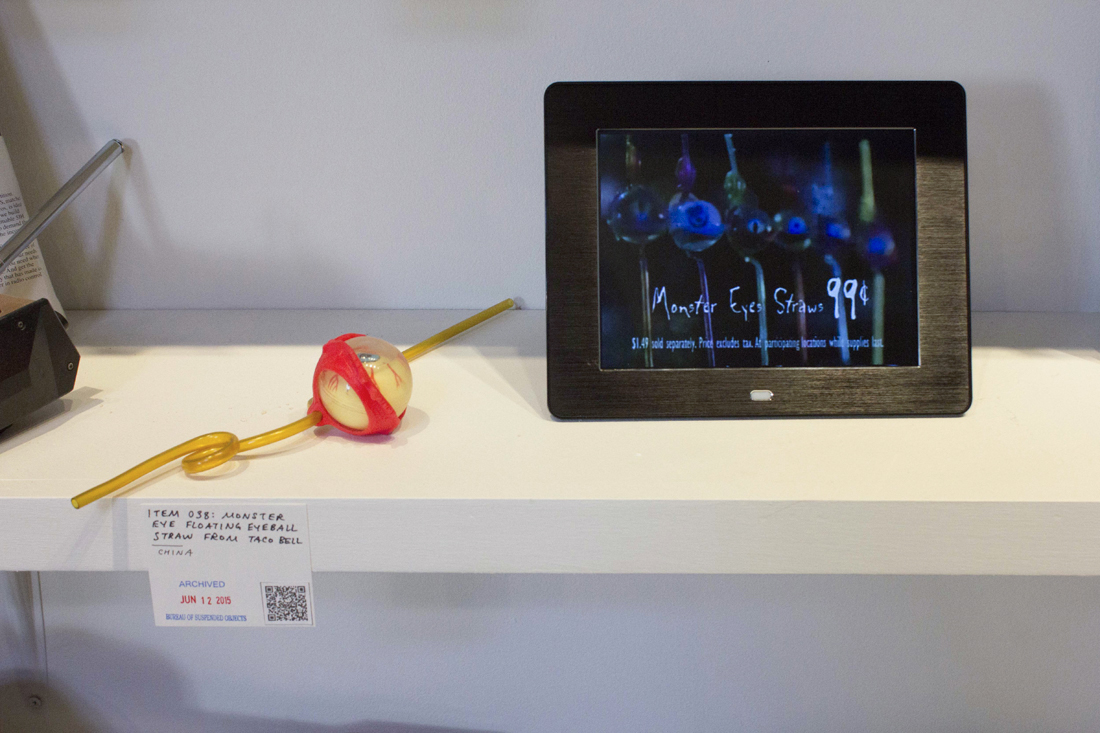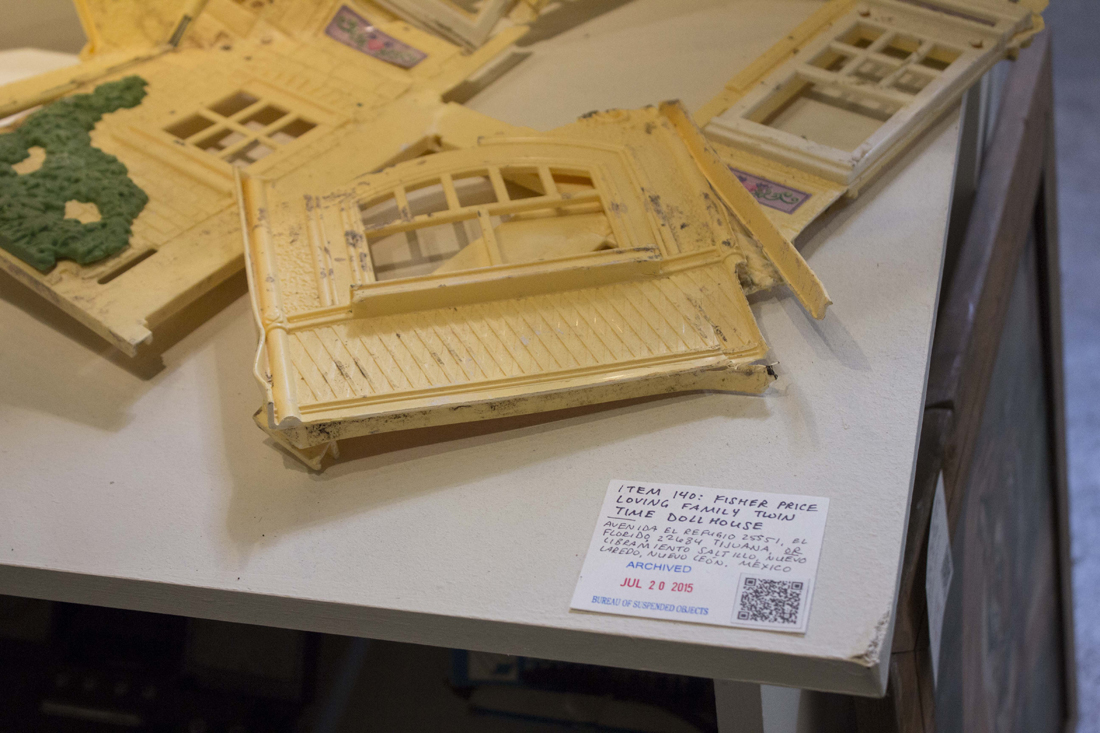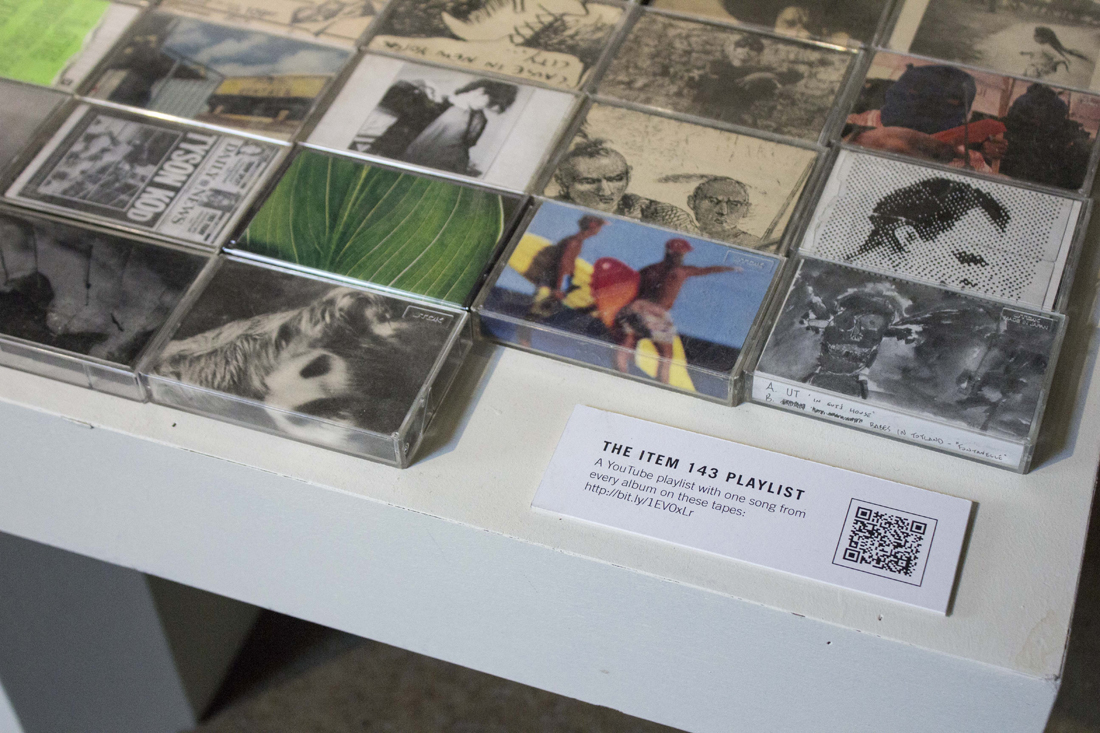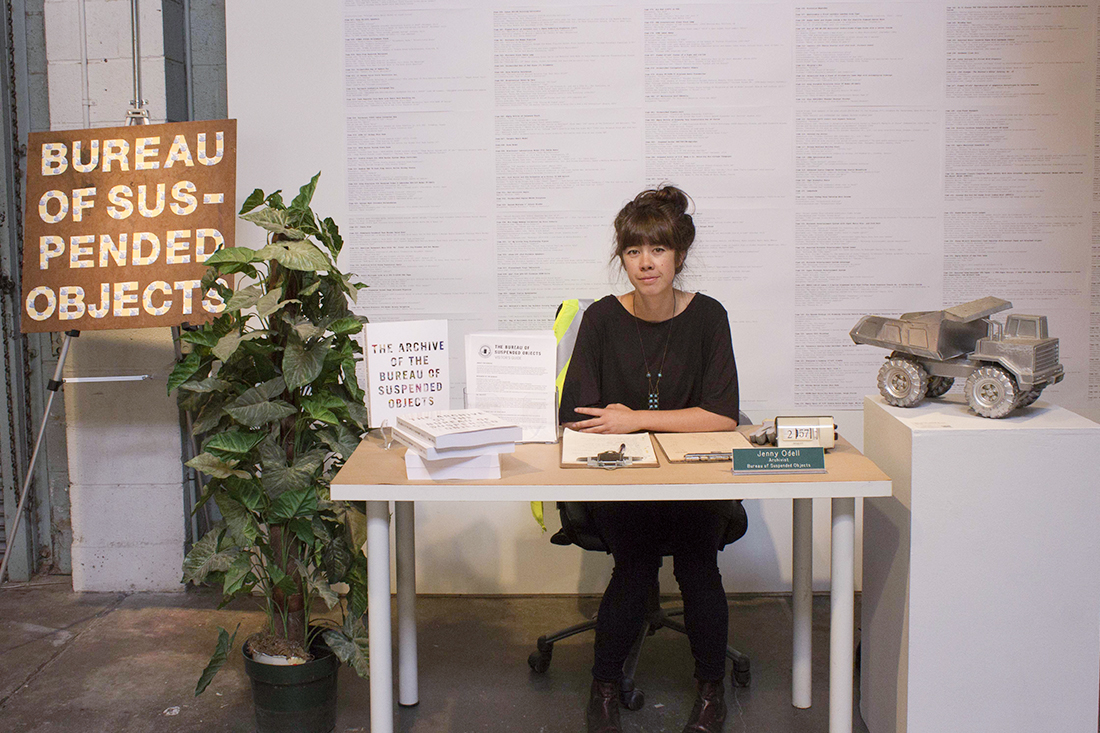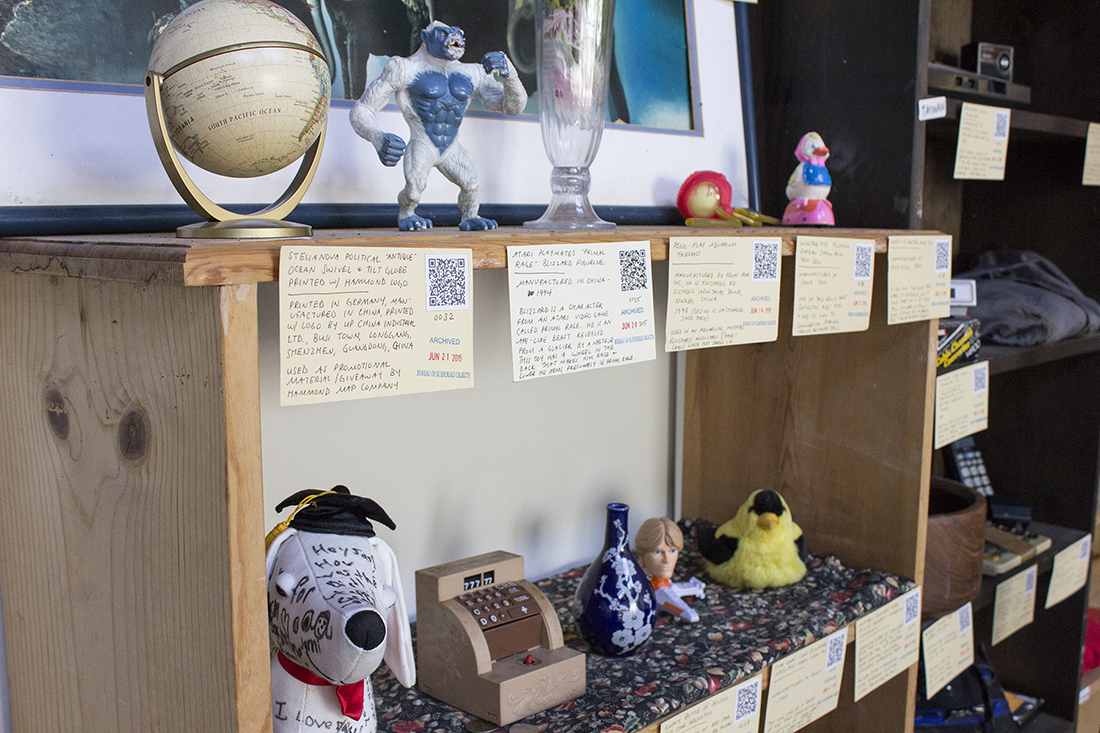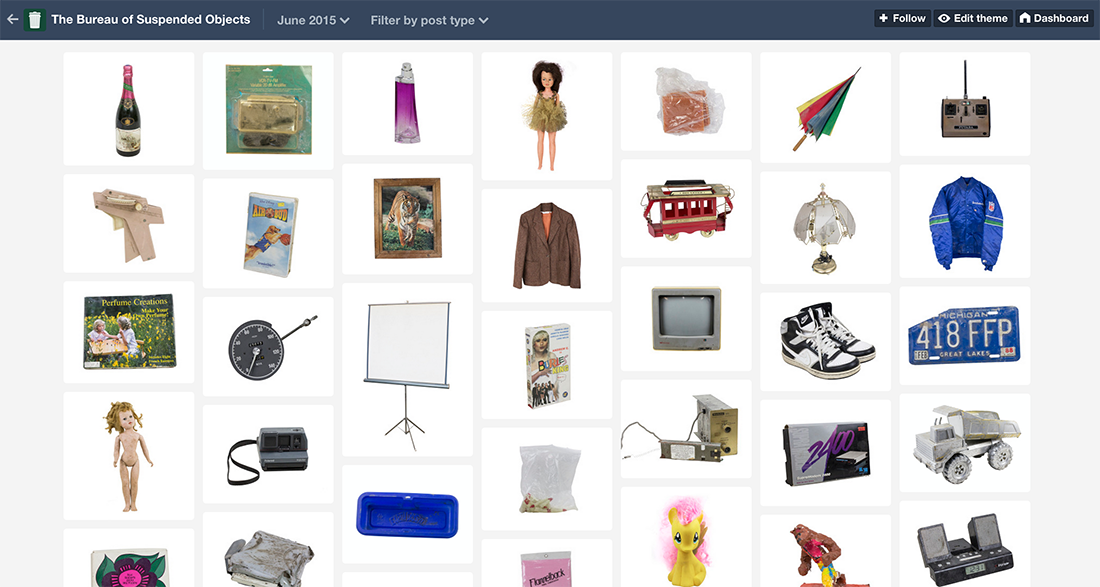The Bureau of Suspended Objects
2015
The world is not a solid continent of facts sprinkled by a few lakes of uncertainties, but a vast ocean of uncertainties speckled by a few islands of calibrated and stabilized forms.
– Bruno Latour

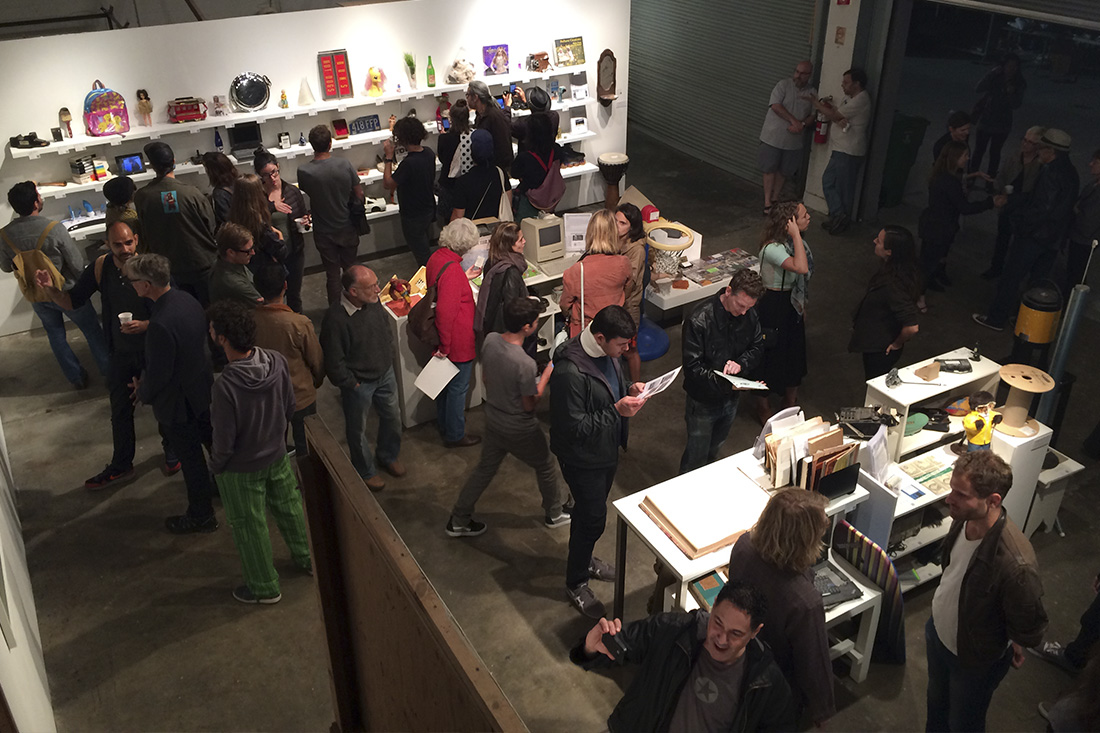
The Bureau of Suspended Objects is a one-person organization and archive that I originally operated through an artist residency at the Recology dump in San Francisco. The residency allows artists daily access to the public disposal area, where unwanted objects are discarded and processed on their way to the landfill and other locations. While in residence, I collected, archived, and researched the "past lives" of 200 objects.
An exhibition of the B.S.O. took place on Recology SF on September 18 and 19, 2015. Visitors to the archive were able to scan QR codes on each of the objects in order to be taken to a page with information about that object (the story of its manufacturing, Street View of the factory, company history, retail and used value, links to TV commercials, etc.). Some items were exhibited next to screens playing their original TV commercials or other related video (for instance, Item 171, Apple PowerBook G4, was exhibited next to a video of Steve Jobs rhapsodizing about its titanium body at MacWorld in 2002). Using the Layar app, visitors could also 1) scan photos of archived items in order to see an overlay showing the new, product photo version, 2) scan fragments of objects in order to see the entire thing, and 3) scan digital prints (Things Made in Asia and Things Made in North America) to see a text overlay showing where each item was manufactured.
All 200 objects continue to exist digitally at on the B.S.O. site as well as in the book, The Archive of the Bureau of Suspended Objects (available for purchase as a book or as a PDF here). Since the residency, The Bureau of Suspended Objects has been exhibited at Napa Valley Museum, the Marjorie Barrick Museum of Art, the Montserrat College of Art, and B4BEL4B. The B.S.O. has also collected and archived unwanted objects through residencies at the Palo Alto Art Center and The Museum of Capitalism.
